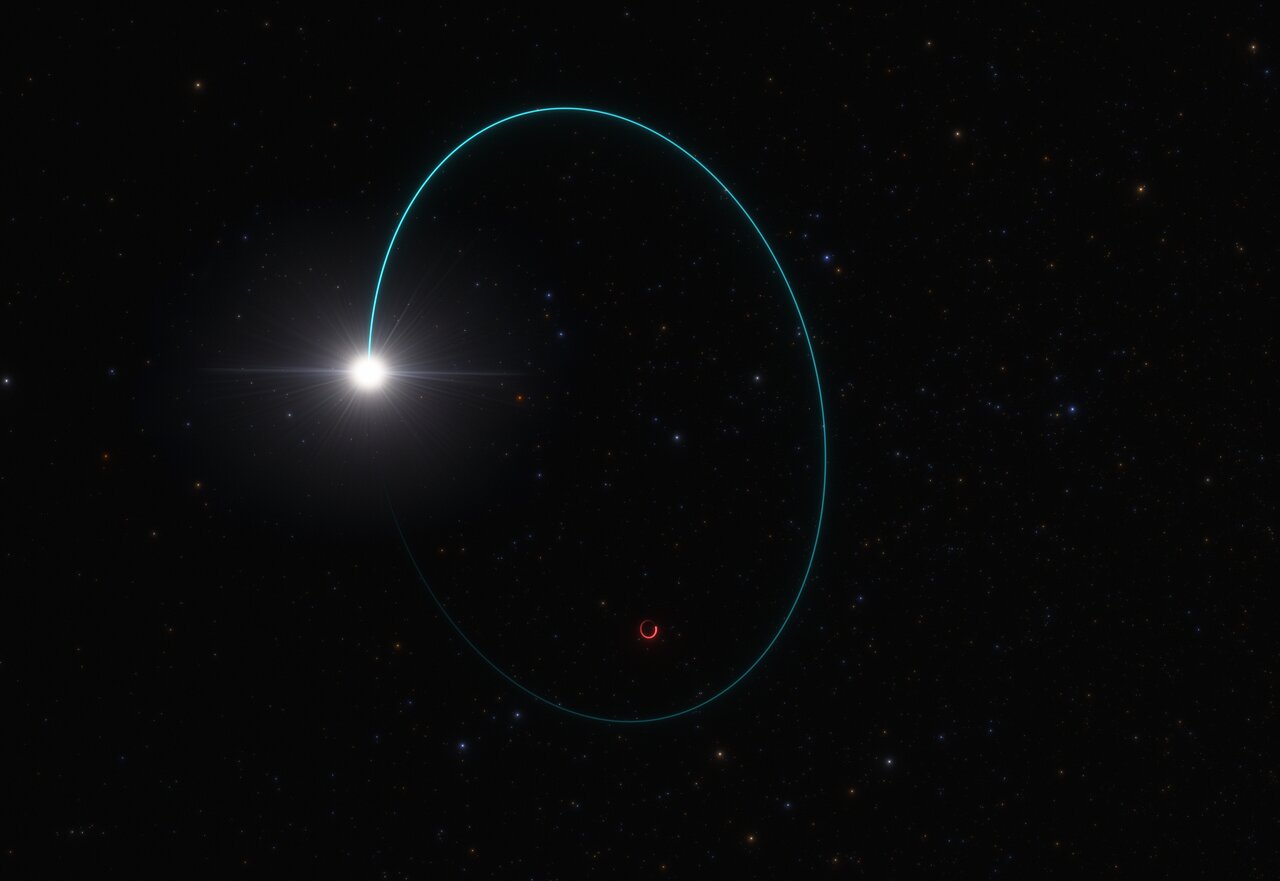
Astronomers have discovered extremely powerful winds pummeling the equator of WASP-127b, a giant exoplanet. Reaching speeds up to 33,000 km/h, the winds make up the fastest jet stream of its kind ever measured on a planet...
Read More

Astronomers have discovered extremely powerful winds pummeling the equator of WASP-127b, a giant exoplanet. Reaching speeds up to 33,000 km/h, the winds make up the fastest jet stream of its kind ever measured on a planet...
Read More
Astronomers have identified the most massive stellar black hole yet discovered in the Milky Way galaxy. This black hole was spotted in data from the European Space Agency’s Gaia mission because it imposes an odd ‘wobbling’ motion on the companion star orbiting it. Data from the European Southern Observatory’s Very Large Telescope (ESO’s VLT) and other ground-based observatories were used to verify the mass of the black hole, putting it at an impressive 33 times that of the Sun.
Stellar black holes are formed from the collapse of massive stars and the ones previously identified in the Milky Way are on average about 10 times as massive as the Sun...
Read More
Researchers using ESO’s Very Large Telescope (VLT) have observed an extreme planet where they suspect it rains iron. The ultra-hot giant exoplanet has a day side where temperatures climb above 2400 degrees Celsius, high enough to vaporise metals. Strong winds carry iron vapour to the cooler night side where it condenses into iron droplets.
“One could say that this planet gets rainy in the evening, except it rains iron,” says David Ehrenreich, a professor at the University of Geneva in Switzerland. He led a study, published today in the journal Nature, of this exotic exoplanet. Known as WASP-76b, it is located some 640 light-years away in the constellation of Pisces.
This strange phenomenon happens because the ‘iron rain’ plane...
Read More
This spectacular image from the SPHERE instrument on ESO’s Very Large Telescope is the first clear image of a planet caught in the very act of formation around the dwarf star PDS 70. The planet stands clearly out, visible as a bright point to the right of the center of the image, which is blacked out by the coronagraph mask used to block the blinding light of the central star.
Credit: ESO/A. Müller et al.
SPHERE, a planet-hunting instrument on ESO’s Very Large Telescope, has captured the first confirmed image of a planet caught in the act of forming in the dusty disc surrounding a young star. The young planet is carving a path through the primordial disc of gas and dust around the very young star PDS 70. The data suggest that the planet’s atmosphere is cloudy.
The SPHERE instrument enabled...
Read More
Recent Comments